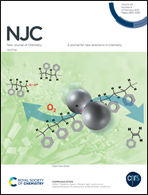Magnetization of biochar nanoparticles as a novel support for fabrication of organo nickel as a selective, reusable and magnetic nanocatalyst in organic reactions†
Abstract
Catalyst species are an important class of materials in chemistry, industry, medicine and biotechnology. Also, waste recycling is an important process in green chemistry and economic efficiency. Therefore, in order to recycle waste, biochar nanoparticles were prepared from chicken manure. Then, the biochar nanoparticles were magnetized under a green and environmentally friendly method. Finally, the surface of the magnetic biochar nanoparticles was modified and further they were applied as a novel support for fabrication of nickel as a homoselective and reusable catalyst in organic reactions. The structure of this organic–inorganic catalyst has been characterized by N2 adsorption–desorption isotherms, and the SEM, EDS, WDX, XRD, TGA, AAS, FT-IR and VSM techniques. This magnetically recyclable catalyst was used in the homoselective synthesis of tetrazole and pyranopyrazole derivatives. This catalyst can be reused several times without significant loss of its catalytic efficiency. The heterogeneity and stability of this nanocatalyst were studied by hot filtration and the AAS technique. Also, the reused catalyst was characterized by the SEM, EDS, AAS and BET techniques.


 Please wait while we load your content...
Please wait while we load your content...